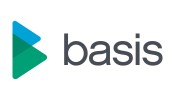The integration framework can be used to perform outbound integration on potentially any external system.
Two tables need to be maintained here, table ‘/BTI/TE_INT_SYST’ is the table that holds all the external system id’s and descriptions along with any RFC Destinations that may possibly be needed for example for a Solution Manager system, also table /BTI/TE_INT_CLAS needs to be maintained and this holds the class that the framework references.
/BTI/TE_INT_SYST – TE Integration System List
| Field | Description |
| EXTSYS_NO | Main external system identifier, this is the identifier of the system that you wish to integrate with we can have as many systems as we want. An example of this could be: 1 – Remedy 2 – Solution Manager 3 – Service Desk |
| EXTSYS_ID | Single word identifier for external system. E.g. REMEDY |
| EXTSYS_NAME | Full description of external system |
| RFC_DEST | Some external systems that you want systems with could possibly be SAP systems for example Solution Manager so the RFC destination is held here. |
/BTI/TE_INT_CLAS – Integration Object Class List
| Field | Description |
| EXTSYS_NO | Main external system identifier, this is the identifier of the system that you wish to integrate with we can have as many systems as we want. An example of this could be: 1 – Remedy 2 – Solution Manager 3 – Service Desk |
| CLASSNAME | Held here is the class name where the bulk of the integration processing is done. Integration works on the principle of having a class for each external system that we need to integrate with. This is what is called in the integration send program. E.g. /BTI/TE_CL_INTEGRATION_SOLMAN. |



Post your comment on this topic.